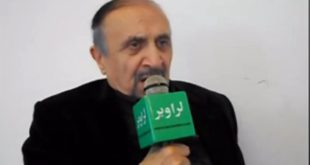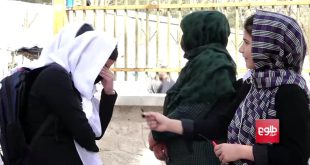Historical Briefs:
Russia’s War in Afghanistan Never Ended
Bruce G. Richardson
Since the earliest days of the Cold War and to this day, Moscow has been covertly supplying the minority faction IOAP, (Armed Opposition of the Panjsher) also known as the Northern Alliance with finance, arms, ammunition and air and artillery support against the majority Pashtuns engaged in armed and diplomatic resistance to the Russo-cum-strategic planning, incursion, ethnic divide and divisive politico-influence. Earlier this month, Vladimir Putin acknowledged this “secret” and promised to continue this military support to the anti-Taliban opposition. The northern minorities have a well-documented and indisputable history of collaboration with the USSR during the Jihad. Russia’s relationship with the northern group fell under the leadership of Ahmad Shah Massoud and was at the time maintained under absolute secrecy. Following withdrawal of Soviet troops in 1989, however a number of retired military and intelligence officials with Afghanistan experience divulged in their respective memoirs, a storied history of what has become a highly controversial study…the collaborative-relationship between the group (IOAP) from Panjsher and the Soviet 40th Army from the earliest days of the Soviet/Afghan War to the present day. (See: Afghanistan, Political Frailty and External Interference, Dr. Nabi Misdaq, 2006, pp. 212, 330n-15, and American Raj, Liberation or Domination, Ending the Conflict between the West and the Muslim World, Eric S. Margolis, 2008, p.196).
Of recent, journalists travelling in the north of Afghanistan have discovered that “unmarked Russian bombers have attacked Taliban targets in Afghanistan on behalf of the Northern Alliance.” In addition, soldiers of the 201st Division are openly training Northern Alliance tank crews and maintaining/servicing military hardware. See: Institute for the Study of Conflict, Ideology and Policy, Perspective, Volume XII, No 1 (September-October 2001, ‘Russia’s Secret Operations’, Pavel Felgenhauer, 1).
Northern Alliance commanders also are admitting that there are many Russian pilots, advisers and other military personnel directly involved in combat against the Taliban inside Afghanistan. At the start of the American-led war in 2001, as the USAF bombed targets in and around Kandahar, Russian troops moved south and fought alongside Northern Alliance soldiers against the Taliban. Recently, 1500 additional Russian soldiers were airlifted into Tajikistan to join the 201st Division currently involved in combat in Afghanistan. (See: American Raj, Liberation or Domination, Ending the Conflict between the West and the Muslim World, Eric S. Margolis, 2008, p.205).
As a result of interviews with Russian military and intelligence officials, it has been learned that the lesson of Russia’s secret wars is elementary: “Do not engage in combat against guerrillas, especially in direct combat while the population support them.”
See: (Institute for the Study of Conflict, Ideology and Policy, Perspective, Volume XII, No 1 (September-October 2001, ‘Russia’s Secret Operations’, Pavel Felgenhauer, 1).
Northern Afghanistan, Sixteenth Soviet Republic: During top-secret deliberations in preparation for the invasion of Afghanistan, the Kremlin came to realize that special operations formations would be sent in support of the 40th Army. On 11 June 1980, Yuri Andropov the KGB Chairman issued an order to send a group of (KOUS) graduates from a special department that had experience in training KGB personnel. As a result, some 77 officers were dispatched to Afghanistan, later the USSR Council of Ministers decided to form the special purpose unit …Kaskad. Under Kaskad #1-4, Special Operations teams strove to create ethnic tensions, recruit proxy-militias from among the anti-Pashtun minorities, and work toward the partition of Afghanistan toward the pre-planned strategy of joining the nine-northern provinces, Kunduz, Samangan, Badakhshan, Baghlan, Takhar, Balkh, Jowzjan, Badghis and Faryab with their respective co-ethnics in restive Central Asia.
Accordingly, Soviet strategists embarked on a long-range plan for the dismemberment of the northern tier of Afghanistan to be designated as the Sixteenth Soviet Republic. Soviet strategy however had been exposed by Dr. Sayed Khalil Hashemeyan, Editor and Publisher of the Afghan Mirror who would publish a copy of the top-secret Soviet map (circa 1981) showing the northern tier of Afghanistan as the Sixteenth Soviet Republic. (See: Defense & Foreign Affairs Strategic Policy. ‘The Fall of Kabul has not slowed the Pace of Regional Strategic Change, Yossef Bodansky, p.11-12, Washington, 1992, and Afghanistan, Ending the Reign of Soviet Terror, 2nd Edition, 1998, appendix section, Bruce G. Richardson, Map translation from Russian to English by Professor Ian Helfant, Department of Slavic Languages and Literature, Harvard University, also for corroboration, contact: afghanmirror2@yahoo.com).
Kaskad-4: charged with responsibility for the plan to partition Afghanistan began its active-service in Afghanistan on 15 April 1982. (See: Russia’s Special Forces, Henry Plater Zyberk, 05/09).
While at recent press conferences Russian officials steadfastly maintain that their support of the Northern Alliance is predicated strictly on and in pursuit of…”emerging victorious in the war on terror.”
Yet as we have come to learn, the so-called “war on terror,” whether cast in the U.S. version or Moscow’s is irrefutably-fraudulent, and represents a media-assuaging, fictitious cover story seeking the world’s rhetorical support for their respective waging of global economic and strategic strangulation and domination through endless-war and occupation. But the reality is that Moscow fears a triumphant Taliban would likely infect or induce like-minded groups to protest and take up arms in an attempt to overthrow current dictatorial Communist regimes in the restive Central Asian Republics. And therefore however indisputable… is the fact that Russia’s war in Afghanistan has never ended!
In diplomatic and strategic concert with Moscow, Washington’s long-held pre-occupation over Pashtun strength and solidarity, notable with their indisputable and demonstrated bias, rests on the fact that Pashtun cohesiveness spells a lessened ability and likelihood for the U.S to dominate Afghanistan, both in strategic and economic terms.
Bruce G. Richardson
Post Script:
In a classic mixture of bittersweet-irony and incredulity over the presence of a seemingly catatonic state of mind within the Obama Administration’s foreign-policy decisions, it has been announced (Global E-Research Newsletter, 7/14/13) that by 2016, the U.S. will have purchased 86 Russian-made Mi-17 helicopters for the Afghan Air Force at a cost of $600-million dollars. Adding to this preposterous, mind-numbing, hard-to-believe decision is the fact that currently the Russian export firm from whom the U.S. has contracted with for the helicopters is none other than Rosonboroexport, the one and the same firm who’s helicopter gunships supported the Afghan Communist regime and decimated Afghan villages between 1979-1989 while at that same time the U.S. supplied Stinger surface-to-air missiles to the Mujahideen with which to shoot them down. To add further incredulity is the fact that Rosonboroexport is now supplying arms to the government of Syria’s Bashar-al-Assad. And lest we forget, the Assad regime is busily engaged in fighting against a U.S./Israeli inspired and sponsored insurrectional regime-change or rebel force.
 لراوبر ویب پاڼه لراوبر يو افغان – تازه خبرونه
لراوبر ویب پاڼه لراوبر يو افغان – تازه خبرونه


